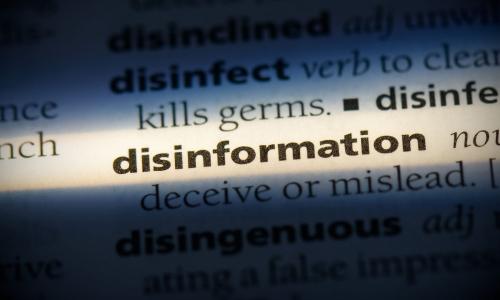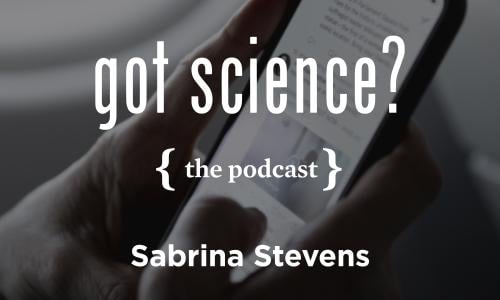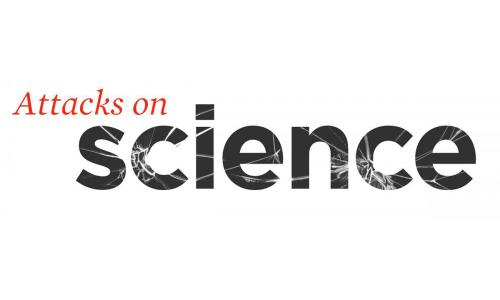First, the bad news. No amount of finger-pointing is going to help convince someone who’s fallen into the disinformation trap that they’re wrong.
Presenting facts and evidence to counter a lie doesn’t often work, either.
What actually works
Now, the good news: Once you've identified disinformation, there are evidence-based ways to protect yourself and the communities you belong to from disinformation.
Using these tips, you can stop disinformation’s spread, minimize its damage, and respond to it effectively.
Sharing is not caring
When you encounter a piece of disinformation, the most important thing you can do is to stop it from spreading.
That means: Do not share disinformation
If you see disinformation on Facebook, don’t share, comment on, or react to it. If you’re on Twitter, resist the temptation to retweet, quote tweet, or share a screenshot.
Why? Even if you’re pointing out that it’s wrong, spreading the disinformation helps further the goals of the bad actors behind it.
How? Algorithms. When you share, react to, click on, or otherwise engage with disinformation on social media, even to mock or debunk it, you’re telling a social media algorithm that the item is popular. This encourages the algorithm to spread it and similar content more widely, so it appears more often and in more people’s feeds.
And when a lie is repeated and seen multiple times, people unintentionally begin to accept it as truth due to their increased familiarity with the false claim, a phenomenon known as the illusory truth effect.
What should I do instead? Part I: Inoculate
Inoculation protects our bodies against viruses by exposing them to a weakened portion of virus. After inoculation, if we encounter the virus we’ve been exposed to, our bodies know how to shut it down. Protecting ourselves and others against disinformation works similarly.
If we are on guard against disinformation, and alert others to it, research shows that we tend to think more critically about the information we are encountering. Just reading these sentences has helped build up your defenses.
But remember, don’t warn others by sharing specific points or examples of disinformation, even if it’s to debunk it. Instead, alert others to watch for and expect disinformation on a specific topic, or from a specific source or sources. That way people will be primed to be more watchful and to think more critically when they encounter related claims.
Part II: Amplify accurate and credible sources.
Instead of sharing disinformation, amplify accurate stories and information from trusted and credible sources. This reduces the ability of falsehoods to spread—and helps drown out the noise of disinformation with more reliable information.
If you do feel compelled to respond to a specific point of disinformation, one method that can help is popularly if unartfully known as ‘the truth sandwich.’ Cognitive linguist George Lakoff proposed this strategy for media reporting on disinformation, but it can work for anyone.
To make a truth sandwich, begin and end with the facts, and layer a reference to the lie in the middle—while making it clear that it is a lie.
Here’s an example: Much heavier snowfall in regions where winters were historically mild is a sign of climate change. Some climate change deniers falsely claim that increased snow must indicate a cooling world. But climate change makes extreme and erratic weather more likely—and in some cases, more severe.
Another way to do this is to lead with some shared values, reference possible disinformation without repeating it, and instead focus on the real solutions.
Here's an example: We all want to ensure a healthy planet for our children, and while our individual choices do matter, they need to be made in concert with real systemic changes. Climate change is solvable: We have the technologies. We have the science. We now need the leadership—and the courage to change course.
Part III: Report disinformation
If you encounter disinformation on social media, flag it for the social media platform where you see it.
Social platforms all give users the power to flag content that violates their guidelines, including Facebook, Twitter, Instagram, and TikTok.
While these guidelines might not currently cover all the disinformation you may encounter, they continue to evolve as the platforms grapple with the growing problem of disinformation—and it can still be worth reporting even if you’re unsure whether the guidelines cover that particular post.
Learn more about:
Part IV: Engage in one-on-one conversations
Building relationships through one-on-one conversations over time has proven to be highly effective way to inoculate others against disinformation, share credible information, and mobilize people into action so that solidarity grows and disinformation campaigns are thwarted.
Relationships must be built and strengthened with family members, friends, and community members to have solidarity against the bad actors who use disinformation to divide, distract, and demoralize communities. Be patient with people in your life who have bought into and are amplifying disinformation. Often, they’re reacting from fear or other negative emotions.
If you’re up for it, and you think you can have a good-faith conversation, you can try to talk through the emotions behind their choices—without judgment or shaming. This can be a good starting point for people to open up to different views.
Of course, some people are not operating in good faith, and are too firmly entrenched in disinformation to be moved. Don’t exert your precious energy and time on those who will only drain yours.
Learn more about relational organizing and how to have productive one-on-one conversations that help mobilize people into action.
Part V: Recognize your power and highlight actionable solutions
Disinformation campaigns seek to divide, distract, and overwhelm those of us who are working for real change. But remember that those of us who value protecting our planet and each other vastly outnumber those bad actors who seek to maintain—and benefit from—the status quo. Indeed, this is why they resort to lies: their priorities and values just aren’t as popular on their own.
Remember how much power you have individually to make change, and how much power we have collectively. Stay focused on what you care most about and how you can help these causes, and don’t get bogged down or distracted by disinformation. Instead focus on highlighting things people can do to advance the change you want to see.
And share these disinformation-fighting strategies—and any of the additional resources you find helpful—with loved ones and community members who could use them. Because when we diminish disinformation’s power, we build up our own.
Learn more

How to Spot Disinformation

How Disinformation Works







